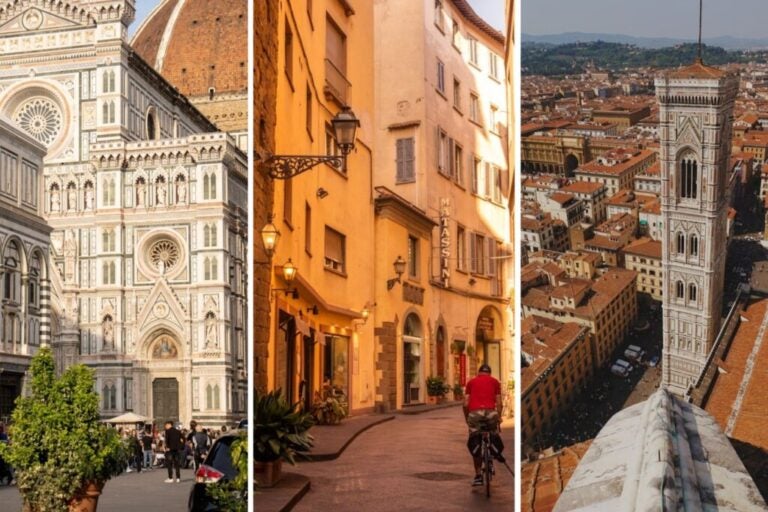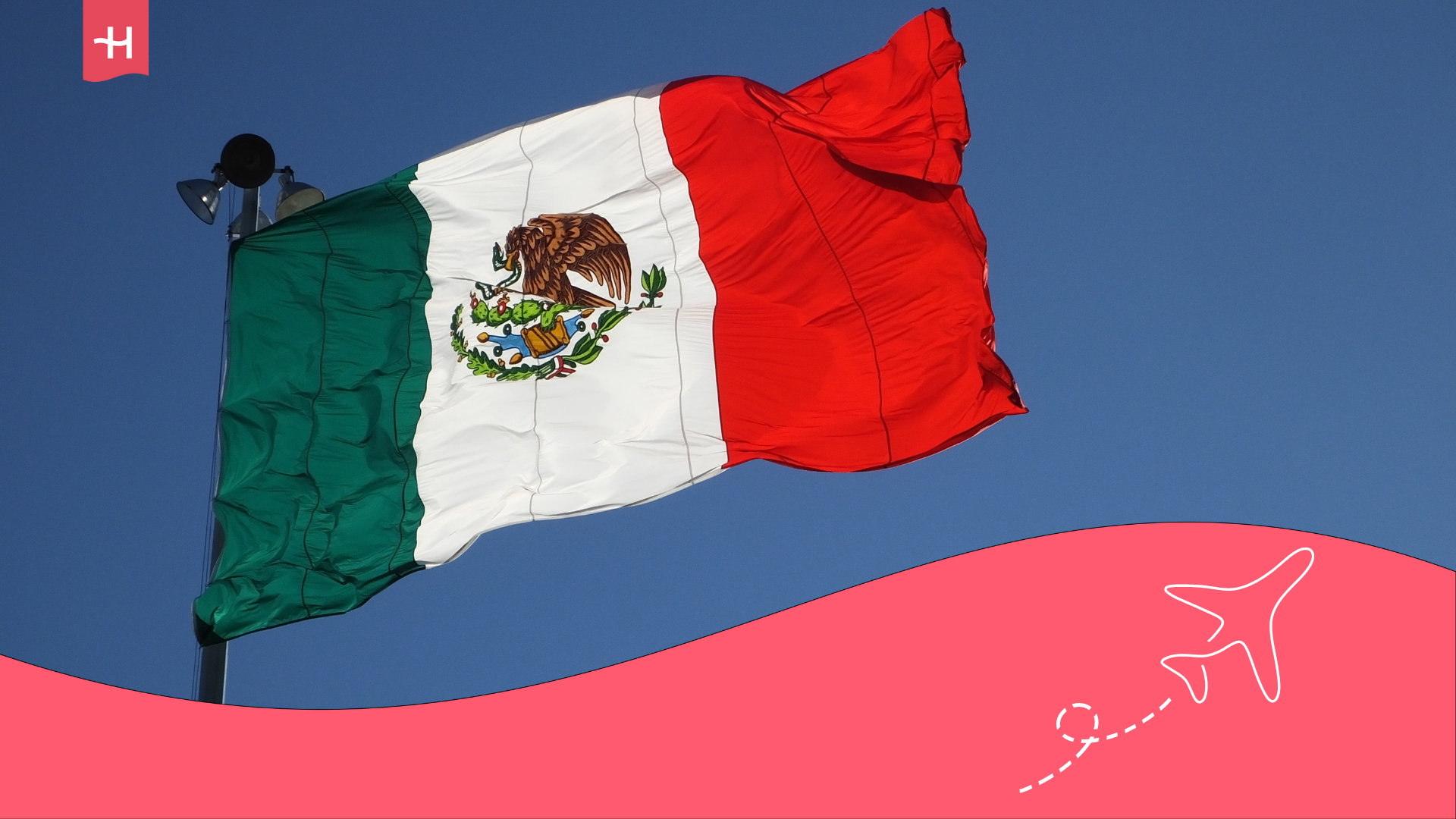Accommodation in Florence for long-term stays as a digital nomad
Are you planning to live for a while in the capital of Tuscany but don’t know where or what type of accommodation to choose? Don’t worry — in this guide on accommodation in Florence for long-term stays, we’ll help you find the best areas and housing options to make your experience unforgettable. Located on the […]
Are you planning to live for a while in the capital of Tuscany but don’t know where or what type of accommodation to choose? Don’t worry — in this guide on accommodation in Florence for long-term stays, we’ll help you find the best areas and housing options to make your experience unforgettable.
Located on the banks of the Arno River in central Italy, Florence is a city with a cultural legacy as grand as its beauty. Great masters like Michelangelo and Leonardo Da Vinci adorned its streets with unique architectural and artistic richness, while the powerful Medici family also left their mark. Can you imagine the advantage of settling here for a few months, with enough time to explore all of its attractions?
Whether you’re travelling with your laptop to work remotely or planning to study Italian in Florence, choosing the right place to live will make your experience even more rewarding. Let’s not forget this is a popular tourist destination, so it has pricier areas and accommodations for all tastes. Without further ado, let’s start searching for your next temporary home in this Renaissance jewel!
Where to Stay in Florence? The Best Accommodations for Extended Stays
Florence is not a huge city, but its infrastructure is well-equipped for those who decide to stay for a while. So, whether you’re here to study, work remotely, or simply live surrounded by art and good food, you’ll find accommodations for all lifestyles and budgets. While the demand from tourism increases accommodation prices, especially in the historic centre, you can still find neighbourhoods with more affordable prices.
In other words, there are ways to live in Florence without making a significant impact on your wallet. Many digital nomads and students achieve this by planning ahead, choosing neighbourhoods farther from the centre or sharing accommodation.
Next, we’ll tell you about the main accommodation options for long stays in Florence and how much you can expect to pay per month. We’ll also give you tips on how to find these options and what details to check before booking.
Coliving in Florence
More and more spaces in Florence are adapting to the coliving format, combining community, design, and comfort. This type of shared housing is ideal for travellers who move alone around the world and wish to connect with people who share the same mindset. As a result, remote workers, digital nomads, creatives, and freelancers gather in these places.
In addition to community life, coliving has other advantages. For example, rents are more affordable than traditional accommodations, with flexible contracts available, either weekly or monthly, without long-term commitments. Additionally, their final price includes services like WiFi, weekly cleaning, electricity, water, and gas.
Colivings in Florence operate in the same way as in any other city: they include private or shared rooms, common areas, coworking spaces, and equipped kitchens. In some cases, they also organize activities to strengthen bonds between residents, ranging from yoga classes and afterworks to workshops.
- Living in a coliving in Florence costs around €650-1,100 ($757-1,281) per month, with services included.
Not sure where to start? Combo Florence, in Santa Croce, and Ostello Tasso, in San Frediano, could be good options, as well as The Social Hub Florence. We also recommend using platforms like Coliving.com and Outsite, as well as Facebook groups for expats or nomads in Italy.
Furnished apartments
Living in a community isn’t for everyone. In fact, many digital nomads choose this way of life because they value solitude, independence, and privacy. Therefore, if you’re looking for a place that offers all of these, renting a furnished apartment is a practical option. Many landlords are open to monthly rentals, especially outside the historic centre, so you’ll find several options.
On platforms like Idealista.it, Spotahome, Uniplaces, HousingAnywhere, and Facebook groups like “Expats in Florence” or “Affitti Firenze”, you’ll find everything from modern apartments in new buildings to flats in ancient palaces. Most come with an equipped kitchen, washing machine, and internet connection. In some cases, utilities are also included.
- The cost of a one-bedroom apartment in Florence starts from €750 ($873). For a two-bedroom apartment, prices range from €1,300-1,800 ($1,524-2,097).
A tip if you’re renting for more than 30 days: Try to sign a registered contract. This will give you greater legal protection and allow you to register with the local authorities, which is useful if you need to enrol in a school or course.
Seasonal Airbnb: Another Convenient Option for Staying in Florence for a While
Many hosts in Florence offer monthly discounts ranging from 15% to 30%, making Airbnb another valid alternative for living in Florence, especially if you want to move in without signing contracts or paying deposits.
Airbnb is one of the most popular rental platforms worldwide, and in a tourist city like Florence, it’s no surprise it’s widely available. You just need to filter on the platform according to the type of property you’re looking for and the services you need. For example: Equipped kitchen, high-speed WiFi, workspaces, and washing machine. Some hosts even offer additional services, such as weekly cleaning or personalised city tips.
- The estimated monthly price for an Airbnb in Florence ranges from €900-1,600 ($1,048-1,864), depending on the area, property type, and season.
A tip is to contact the host before booking to try to negotiate a special rate for long stays. Many are willing to adjust the price if you communicate kindly.
Hotels with Long Stay Discounts
As a popular tourist city, Florence is filled with hotels to suit all tastes and budgets. While it’s an option generally chosen by travellers staying for a few days, some boutique hotels and apart-hotels offer monthly rates for stays of over 14 or 28 days. Some even include kitchens and weekly cleaning.
The best option is to write directly and ask about “long stay” or “monthly rate” offers, as they’re not always published, but many hotels offer them. You can also search for options on Stayforlong, a platform specialised in hotel bookings for long stays.
- The estimated monthly price ranges from €1,200-1,700 ($1,398-1,980).
Student and professional residences
With its many universities, art schools, and design institutes, Florence has numerous residences for international students. They’re safe, affordable, and well-located options that sometimes also accept professionals or interns with temporary contracts.
They offer private and shared rooms, communal kitchens, study spaces, social activities, and sometimes cultural programmes and Italian classes. Additionally, many are close to universities like the Accademia di Belle Arti or the University of Florence, making it easy for students to get around.
A tip is to apply early, as spots are limited, and many residences only accept applications a month in advance. We also recommend looking on Erasmus Play Florence, which connects with both private and public options for long stays.
- The estimated monthly cost for residences ranges from €500-800 ($582-932), with services included.
Connectivity in Florence from Day One
Whether you’re working, studying, or simply getting around Florence, you’ll need a good internet connection. While most coliving spaces, apartments, and hotels offer WiFi, it’s not always stable. That’s why having your own connection ensures you’re not reliant on your surroundings, especially if you need to join video calls or virtual meetings. Holafly’s eSIM for Italy provides you with unlimited data only on the days you need it, perfect for short stays.
For longer trips, Holafly’s monthly plans are the best option. You’ll get unlimited data across Italy (and in over 160 countries) and the ability to share the internet with multiple devices on the unlimited plan. All of this at a very convenient price, starting from $50.50 per month (€45) with no penalties for cancelling the plan if you no longer need it.
Important: If you are a frequent traveler and want to stay connected without worrying about expensive roaming or looking for a new SIM at every destination, Holafly’s subscription plans are for you. With a single eSIM, enjoy internet in more than 160 countries for a fixed price and no surprises on your bill. Travel without limits and connect easily and securely! 🚀🌍

Where to Stay in Florence? The Best Neighbourhoods and Areas for Extended Stays
Deciding on the best neighbourhood or area to stay in Florence will depend on several factors, including your budget and how close or far you want to be from its tourist attractions.
For example, people who stay for a couple of days typically stay in the historic centre, which hosts the Florence Duomo, the famous Ponte Vecchio, Piazza della Signoria, and the Uffizi Gallery, among others. While the area is extremely picturesque and lively, staying right in the centre can be expensive and noisy, so it’s not ideal for a longer stay.
You shouldn’t worry about this, as Florence is a compact city that’s very pleasant to walk around. It also has an efficient public transport system, so you won’t need to invest much time in commuting. Based on this, our advice is to look for neighbourhoods a little further out, which are just as charming and much more comfortable for daily life.
Here, we’ll tell you about the best areas to live for a while, with their advantages, accommodation types, estimated prices, and key attractions.
Santa Croce
The Santa Croce district is located within the historic centre but is a quieter area, perfect for digital nomads who want to live away from mass tourism. It’s also great for students, as many art, design, and Italian schools are based there.
Here you’ll find supermarkets, street markets, good restaurants, and a mixed community of locals and foreigners. Additionally, the district is strongly connected to Florence’s cultural life, with spaces like the Teatro Verdi and several art galleries.
The Basilica of Santa Croce is the district’s most touristy spot. The imposing Gothic church stands in the square of the same name (Piazza Santa Croce), and most of the area’s activity revolves around it. We also recommend visiting the Mercato di Sant’Ambrogio, Piazza dei Ciompi, and the Bargello Museum, which is filled with Renaissance sculptures. If you want to do some sightseeing in your free time, this is the place to be, but otherwise, you can just get lost in its streets to enjoy the atmosphere.
As for connectivity with the rest of Florence, it’s excellent. From Santa Croce, you can easily walk everywhere, without needing public transport. Imagine that Piazza della Signoria is less than five minutes away, and getting to the Florence Duomo will only take 10 minutes.
Keep these dates in mind: if you’re thinking about staying in Santa Croce, note that on June 24 and Christmas, the Calcio Fiorentino and Christmas market are held in Piazza Santa Croce, both of which attract large numbers of tourists.
Accommodation in Santa Croce (and other amenities for digital nomads)
- Coliving: Combo Florence, located in the former Santa Maria Maggiore convent.
- Hotels with long stay rates: Apart-hotel Santa Croce Florence; Hotel Bodoni (special rates starting from two weeks).
- Student residences: Aparto Manifattura. Although not in Santa Croce, it is in the Manifattura Tabacchi district, within a reasonable distance and well-connected to the universities and cultural landmarks of the city.
- Cafés with good WiFi: Simbiosi Organic Cafè, Caffè Le Murate.

Santo Spirito and San Frediano
This area of Oltrarno (literally “across the Arno”) is one of the most preferred by those who stay in Florence for a while. The neighbourhoods of Santo Spirito and San Frediano are located next to each other and together form the heart of Oltrarno. They centre around the Piazza Santo Spirito, where you’ll find markets, trattorias, laid-back bars, and independent galleries that give the area a bohemian and youthful vibe. Therefore, it’s ideal for those who want to experience authentic Florentine life, away from mass tourism.
Both neighbourhoods are very well located: you can walk to Ponte Vecchio, Piazza della Signoria, and Santa Croce in just a few minutes. They are more affordable than the historic centre, with a good selection of coliving spaces, residences, and apartments for digital nomads and students. While the area is less touristy, it has a very lively atmosphere, especially around the square.
What can I visit in my free time? The Palazzo Pitti, the Giardino di Boboli, and the photogenic Ponte Vecchio are very close.
Accommodation in Santo Spirito and San Frediano
- Lodgerin is a platform that offers various accommodation options in the Santo Spirito district, including studios, full apartments, and student residences.
- Room San Frediano: Located in the heart of the district, offering private rooms in a cosy and peaceful environment.
- Budget hotels or long-stay discounts: In San Frediano B&B, Hotel Horto Convento, Hostel Santa Monaca.
- Furnished apartments: Romantic Apt in San Frediano.
- Guesthouses: Ad Astra, Casa Betania, Ottantotto Firenze.
- WiFi and quiet cafés for working: Ditta Artigianale, Volume, Caffè degli Artigiani.
Where to Stay in Florence? Campo di Marte
The last neighbourhood we recommend in Florence is Campo di Marte. It’s a more residential area, with parks, universities, art schools, and supermarkets, ideal for students or digital nomads who don’t want to be far from the centre. It has a more everyday vibe, with tree-lined streets, local bakeries, and community markets.
Campo di Marte is located northeast of the historic centre, about 20-25 minutes walking from the Santa Maria del Fiore Cathedral. It also has Campo di Marte station, the second most important after Santa Maria Novella, so you’ll have no trouble getting to other parts of Florence. There are also many frequent buses to the centre, so you shouldn’t worry about connectivity with the rest of the city.
Rent prices in Campo di Marte tend to be more affordable than in areas like Santa Croce or Oltrarno, but as you get closer to the Artemio Franchi Stadium, the cost increases. Another attraction is the Parco delle Cascine, perfect if you like running or exercising outdoors.
Accommodation in Campo di Marte
- Student residences: Campus Florence, Residenza Universitaria Calza, Florence Campus Housing.
- Budget hostels: a&o Hostel Firenze Campo di Marte.
- Shared apartments: Viale dei Mille.
Where to Stay in Florence? Frequently Asked Questions
It depends on where you live. The historic centre and areas around the Duomo, for example, are the busiest, as most of the city’s main attractions are located there. As a result, both day and night are full of activity. So, if you’re working from home or need silence to study, it’s better to choose residential areas like Campo di Marte or San Frediano. The type of building also matters: older buildings aren’t always well soundproofed.
Yes, there are very active groups of Erasmus students, artists, digital nomads, and art lovers. Therefore, Florence is a great city to connect with young people from all over the world. A good way to meet people is by joining language exchange meetups, cultural activities, or cooking classes. There are also cafés and colivings that host open events. Meetup.com and Facebook groups like “Expats in Florence” are great allies for integrating into the community.
Florence has a temperate climate, with very hot summers (over 35°C), while winters are mild but humid (between 3°C and 10°C). The best seasons to live in peace are spring and autumn, perfect for walking, studying, or working from a terrace. In November and February, there can be fog, which gives the streets a novel-like feel.
It’s not mandatory, but knowing some Italian will help you integrate into Florentine life. Many locals, especially outside the tourist areas, appreciate when you try to speak in Italian. Also, if you plan to stay for several months, you can take advantage of the opportunity to take classes and improve your daily experience. Schools like Dante Alighieri or the Michelangelo Institute offer intensive courses.
It’s not mandatory, but knowing some Italian will help you integrate into Florentine life. Many locals, especially outside the tourist areas, appreciate when you try to speak in Italian. Also, if you plan to stay for several months, you can take advantage of the opportunity to take classes and improve your daily experience. Schools like Dante Alighieri or the Michelangelo Institute offer intensive courses.
If you’re coming from outside the European Union, you’ll need an appropriate visa to stay longer than 90 days in Florence. Some residences or universities can assist you with the process, so take advantage of this if you’re studying in the city. If you’re an EU citizen, you can stay without restrictions, but if you rent formal accommodation, you may be asked to register with the local authorities. This also helps with opening a bank account or setting up a local phone line.





 Language
Language 


















 No results found
No results found







